Levelling-Up More 16-18 Year Olds

Rising Numbers of 16-18 Year Olds
The population of 16-18 year olds is projected to increase significantly between 2020 and 2024. Projections by the ONS for Great Britain estimate that the number of 16-18 year olds will increase from 2.11m in 2020 to 2.38m by 2024 (see Table 1). This is a projected increase of 267,000.
The all-age population of England as share of the GB all-age population is about 86.7%. And so, a rule of thumb estimate is that the population of 16-18 year olds in England is set to rise from 1.83m in 2020 to 2.06m in 2024, an increase of 230,000 or 12.5%. In 2008, the population of 16-18 year olds in England was 2.02m.
Participating in Full Time Education and Apprenticeships
The premier forms of participation in education and training post-16 is full- time further education and apprenticeships. At the end of 2018, 91.2% of 16 year olds and 84.9% of 17 year olds were in these forms of education and training.
An interesting feature is that participation between 16 and 17 falls in total in these forms of education and training but full-time education falls whilst apprenticeship participation rises albeit from a very low base (see Table 2).
|
Table 1: Projected Population of 16-18 Year Olds – 2020 and 2024 (GB) |
|||
|
Cohort |
2020 |
2024 |
Increase |
|
16 |
718,632 |
812,824 |
94,192 |
|
17 |
700,284 |
788,836 |
88,552 |
|
18 |
692,748 |
777,224 |
84,476 |
|
Total |
2,111,664 |
2,378,884 |
267,220 |
Source: National Population Projections 2018-based: Principal Population Projection by Single Year of Age 0 to 125.
|
Table 2: 16 and 17 Year Olds Participating in Full-Time Education and Apprenticeships – End 2018 (England) |
||
|
16 594,000 |
17 607,900 |
|
|
Full-Time Education |
87.9% |
78.4% |
|
Apprenticeships |
3.3% |
6.5% |
|
Total |
91.2% |
84.9% |
|
Jobs ‘with’ or’ without’ Education or Training |
2.5% |
8.8% |
|
Not Employed but Studying ‘Other Education and Training’ |
3.2% |
2.0% |
|
NEET |
3.2% |
4.3% |
|
Total |
8.9% |
15.1% |
Source: Participation in Education, Training and Employment by 16-18 Year Olds, DfE, June 2019
Duty to Participate to the 18th Birthday
Disturbingly, overall participation in full-time education and apprenticeships falls at age 17 despite the duty to participate in education and training until the 18th birthday. A point often forgotten is that the proportion of 16 and 17 year olds not meeting the duty to participate is much greater than those not in education, employment and training (the NEET group).
Data collected by Local Authorities estimates that 7.6% of 16-17 year olds – 83,000 in total – were not meeting the duty to participate in March 2019 (16-18 NEET and Duty to Participate, DfE March 2019).
Earnings Pull
One aspect of the 16-18 education, training and employment market is the fall in the proportion of 16-18 year olds in full-time education with so-called ‘Saturday’ or ‘student’ jobs. Yet, there is another feature which is often overlooked. The proportion of 17 year olds in jobs with apprenticeships, other forms of education and training or without education and training (15.3%) is nearly three times greater than for 16 year olds (5.8%). And so, for nearly 100,000 17 year olds, full-time education is not for them.
Increasing Achievement at Level 3 by age 19
A key objective of 16-18 policy is to increase the proportion of young people achieving a Level 3 qualification – especially in technical education – whilst maintaining education standards. At present, just short of 40% of 19 year olds do not achieve a Level 3 (see Table 3). A Level reform, the introduction of T levels – and the removal of public funding for some existing vocational Level 3 qualifications – and the possibility of limiting the definition of ‘apprenticeships’ to Level 3 – i.e. Advanced Apprenticeships – stem from this objective.
Level 3 attainment by age 19 is dominated by A Levels. Next in line, but half as large, are existing Level 3 vocational qualifications. Most strikingly of all, is the low proportion achieving a Level 3 via Advanced Apprenticeships (1.6%).
Achieving Level 2 before Achieving Level 3 by age 19
16 year olds without a Level 2 qualification are highly unlikely to achieve a Level 3 by age 19. Only 5.3% of 19 year olds achieve a Level 3 – via full-time vocational qualifications – without a prior Level 2 (see Table 4). And so, for the vast majority of young people achieving a Level 3 by age 19 a pre-requisite is to have achieved a Level 2 beforehand. A critical question with respect to technical education is whether a Level 2 is necessary pre-requisite to achieve a Level 3.
Increasing Participation at Level 3 at 16
Existing Full-Time Level 3 Programmes
One strategy to increase attainment at Level 3 by age 19 above the 60% mark is to increase participation on full-time classroom Level 3 programmes by 16 years immediately on leaving secondary education.
|
Table 3: Percentage of 19 Year Olds Qualified to Level 3 in 2018 (England) |
||||||
|
Cohort |
A Levels Applied A Levels |
AS Levels |
Vocational Qualifications |
Advanced Apprentice- ships |
Other |
Percentage |
|
611,951 |
38.9% |
1.0% |
18.0% |
1.6% |
0.6% |
60.2% |
Source: Level 2 and 3 Achievement in England: Attainment by Age 19, DfE, April 2019
|
Table 4: Percentage of Young People Qualified to Level 2 in 2018 (England) |
||||
|
Age 16 2015 |
Age 17 2016 |
Age 18 2017 |
Age 19 2018 |
|
|
611,951 |
69.5% |
76.2% |
80.2% |
84.0% |
Source: Level 2 and 3 Achievement in England: Attainment by Age 19, DfE, April 2019
A key group is 16 year olds with a Level 2 – usually defined as 5 good GCSEs – but who have not achieved a grade 4+ in maths and/or English.
As a condition of enrolment, post-16 providers – including sixth form and FE colleges – typically insist on GCSE resits in maths and English, and have targeted interventions so that 16 year olds can combine Level 3 study – academic or vocational – and GCSE re-sits in these vital subjects.
Where, however, a 16 year old wishing to enrol on a Level 3 programme with a Grade 3 in maths and/or English must, due to a condition of funding, as a matter of policy re-sit their GCSEs, post-16 providers in practice may allow 16 year olds with a grade 2 in maths and/ or English to enrol on Level 3 courses if they commit to attending targeted support programmes to up their grade to 4+.
Level 3 T Levels
Young people aged 16 will be able to enrol on Level 3 T Levels from September 2020. Whether T Levels increase overall achievement at Level 3 will depend upon the extent to which, other things being equal, they result in more than the current 18% obtaining a Level 3 via existing vocational qualifications.
In terms of GCSEs, the condition of funding does not apply. If 16 year olds have achieved a GCSE grade 3 in maths and/or English, they can enrol on a T Level but will be given flexibility over whether they re-sit their GCSEs and achieve a grade 4+, or sit a level 2 functional skills qualification to satisfy the exit requirement of the T level programme. Failure to achieve maths and English at level 2 by the end of the T Level runs the risk of not gaining the award.
Going forward, an interesting issue is whether post-16 providers delivering T Levels will insist at an institutional level on 16 year olds with a grade 2 in maths and/or English to join targeted GCSE re-sit programmes or allow them to opt for Level 2 functional maths and/or English qualifications. Equally, a key decision for 16 year olds with a grade 3 and below in GCSEs in maths and English who might be aiming to the use T Level as an entry into full time and part- time higher education at age 18/19, is whether HE providers will look more favourably on T Level achievers with grades 4+ in maths and English compared to those with functional equivalents.
Level 3 Advanced Apprenticeships
Increasing attainment at Level 3 by age 19 is not limited to full- time education, academic or technical. A third pathway is level 3 Advanced Apprenticeships.
But to attain, young people must participate. The extremely low proportion of the 19 year old cohort with a Level 3 via Advanced Apprenticeships (1.6%) can partly be explained by the extremely low proportions of 16, 17 and 18 year olds on Level 3+ apprenticeships (see Table 5).
Direct entry at age 16 is tiny: only 1% of the age cohort or 5,940 16 year olds. Entry at age 17 is also limited, with 2.4% of the age cohort entering or 14,600 17 year olds. Participation only climbs at 18 when 4.7% of the cohort enter or 29,400 18 year olds.
|
Table 5: Participation by 16, 17 and 18 Year Olds on Level 3+ Apprenticeships – End 2018 (England) |
|||
|
16 594,000 |
17 607,900 |
18 626,200 |
|
|
Level 3+ |
1.0% |
2.4% |
4.7% |
|
Level 2 |
2.3% |
4.1% |
3.6% |
Source: Participation in Education, Training and Employment by 16-18 Year Olds, DfE, June 2019
Even before the introduction of the Apprenticeship Levy in April 2017, the number of Advanced Apprenticeships available to 16-18 year olds were low. At the end of 2016, 47,600 16-18 year olds were on Level 3+ Apprenticeships. At the end of 2018, the number was 49,400. Either employers do not need Level 3 advanced apprenticeships, or do not want to hire the young people applying for them.
Progression from Level 2 to Level 3
Achievement of a Level 2 as the highest qualification increases over time until age 19. In 2015, 69.5% of 16 year olds had achieved a Level 2 qualification (mainly in the form of 5 good GCSEs). By the time they turn 19, a further 15.5% had gained a Level 2 to 84.0% (see Table 6), although 5.0% had apparently skipped Level 2 and achieved a Level 3. Taking this into account, about 79% of 19 year olds in 2018 had achieved a Level 2 as their highest qualification, an increase of 10ppts between age 16 and age 19.
The main source of increased Level 2 achievement is vocational qualifications (9.9% of the cohort) rather apprenticeships (2.9%) or 5 good GCSEs (2.2%). Importantly, however, achievement at Level 2 (79%) is greater than achievement at Level 3 (60%), equivalent to 100,000 19 year olds. Achievement, of course, is not the same as participation but the current 16-18 system seems to be failing to convert Level 2 achievement into Level 3 achievement by age 19.
Full-Time Education: Level 2 to Level 3
In 2016, around 17% of 16 year olds were on full-time Level 2 programmes. By comparison, 63.6% were on Level 3 programmes, with 48.4% on A/ AS programmes. In 2017, the proportion of 17 year olds on full-time Level 3 programmes increased to 64.5%, with 43.7% on AS/A levels (see Table 7).
Given that the proportion of the cohort gaining a Level 2 increased by 7% between the age of 16 and 17 (see Table 6 above) and the achievement of Level 2 is typically a precursor to progression to Level 3, the proportion of 17 year olds with a Level 2 enrolling on Level 3 programmes should be much higher than the 1% recorded in 2017.
The increase in Level 3 participation between age 16 and 17 masks a fall in A/AS level participation (-4.7%) and an increase in other Level 3 (+5.6%). But if staying-on in full-time education after age 17 by progression from a full-time one- year vocational Level 2 course to a two-year vocational Level 3 course were the norm, the increase in Level 3 participation would be much higher than 1%. And it is, of course, from age 17 when the proportion who are in jobs – with or without training including apprenticeships – jumps to 15.3% compared to 5.8% (see Table 2).
Apprenticeships: Level 2 to Level 3
Progression from a Level 2 apprenticeship to a Level 3 advanced apprenticeships is limited. There were nearly twice as many 16 and 17 year olds in 2016 and 2017 on Level 2 apprenticeships (54,000) as there were 17 and 18 year olds in 2017 and 2018 on Level 3+ apprenticeships (29,000) (see Table 8). By definition, however, ending public funding for Level 2 apprenticeships would cut off this progression route to Level 3 apprenticeships altogether.
Full-Time Education at Level 2 to Level 3 Apprenticeships
It is easy to believe that many 17 and 18 year olds achieving a Level 2 via full-time education might wish to trade-up and gain a job with an Advanced Apprenticeship.
|
Table 6: Percentage of Young People Qualified to Level 2 by Qualification Type in 2018 (England) |
||||||
|
Total At 16 |
5 GCSEs |
Apprentice- ships |
Vocational Qualifications |
Level 3 Qualifications |
Other |
Total At 19 |
|
63.5% |
2.2% |
2.9% |
9.9% |
5.3% |
0.2% |
84.0% |
Source: Level 2 and 3 Achievement in England: Attainment by Age 19, DfE, April 2019
And yet, fewer than 55,000 17 and 18 year olds in 2018 had jobs with Advanced Apprenticeships.
A Transition Year to Level 3 T Levels
A specific approach to increase participation and achievement at Level 3 by age 19 is to enable 16 year olds with or without a Level 2 qualification to undertake a transition year before embarking on two-year full-time Level 3 programmes. This is central to increasing progression onto Level 3 T Levels from age 17.
Unlike the full T level programme, the conditionthe condition of funding for maths and English will apply to this group of learners. This means that some learners may be faced with GCSE resits during their transition phase, but once they progress to the full T level programme, they would be able to take functional skills as an alternative. Even though work experience will be integral to the Transition Programme – and offered alongside the relevant maths and English courses – a crucial question educationalists are asking is whether a stand-alone ‘Level 2’ qualification should be part of it. And to reiterate, a 16 year old with a grade 2 GCSE in maths and English who wishes to keep their options open about progressing from the Transition Year to T Levels to entry into full-time higher education at age 18/19 would need to give careful consideration to opting for GCSE re-sits than taking functional equivalents to be reasonably confident of a place at a higher education institute (university or FE college).
In England, progression to Level 3 is typically after a Level 2 qualification has been achieved beforehand. Achieving a recognised Level 2 qualification as part of a transition year would ensure 17 and 18 year olds have ‘something’ – in addition to work experience – if they decide not
|
Table 7: Participation in Full-Time Courses: Level 2 and Level 3 between 2016, 2017 and 2018 (England) |
|
|
Share of Cohort |
|
|
Full-Time Level 2 – Age 16 End 2016 |
17.2% |
|
Full-Time Level 3 – Age 16 End 2016 |
63.6% |
|
of which |
|
|
A/AS Levels |
48.4% |
|
Other |
15.2% |
|
Full-Time Level 3 – Age 17 End 2017 |
64.5% |
|
of which |
|
|
A/AS Levels |
43.7% |
|
Other |
20.8% |
|
Full-Time Level 3 – Age 18 End 2018 |
13.3% |
|
of which |
|
|
A/AS Levels |
3.6% |
|
Other |
9.7% |
Source: Participation in Education, Training and Employment by 16-18 Year Olds, DfE, June 2019
|
Table 8: Participation by 16, 17 and 18 Year Olds Level 3+ and Level 2 Apprenticeships – End 2016, 2017 and 2018 (England) |
|||
|
2016 16 616,000 |
2017 17 620,500 |
2018 18 626,200 |
|
|
Level 3+ |
0.9% |
2.3% |
4.7% |
|
Level 2 |
2.9% |
4.4% |
3.6% |
Source: Participation in Education, Training and Employment by 16-18 Year Olds, DfE, June 2019
to sign-up to a further two years of full-time education. Indeed, young people who achieve their Level 2 at age 17 or 18 through full-time further education could ultimately conclude that another two-years of full-time study to age 19/20 is not for them however well T Levels are designed, including access to a valuable work placement and high quality pastoral care.
The Need for an Income
Even for 17 year olds with who gain a Level 2 and might wish to progress to a Level 3 on a full- time basis find the prospect of doing so on little or no income daunting. Not all 17 year olds can expect their parents to transfer child benefit and child tax credits to them and many will not be eligible for bursary grants. Student jobs are also diminishing. A job with some money might be viewed as a better prospect than full-time education without any.
Succeeding at Level 2 by age 19 is ‘Success for Some’
Despite the well-intentioned focus on increasing progression and achievement at Level 3 by age 19, the danger is that enabling more young people to acquire a Level 2 by the same age is equally desirable and would count as a success for many.
Close to 100,000 young people aged 19 – about 1 in 6 of the age cohort – do not achieve a Level 2.
Level 2 Classroom Learning and Apprenticeships
The first order question is whether the achievement of Level 2 qualifications remains a policy objective for the 16-18 phase: if it does, the consequent issue is whether Level 2 participation and achievement should be done via classroom based only learning – full-time or part-time – or a combination of classroom-based learning and apprenticeships at Level 2 should be followed, noting the need for a ruthless drive on achievement rates for each.
Ending Funding for Level 2 Apprenticeships
Any decision to cease public funding for Level 2 apprenticeships even if phased over time would have an impact on 16-18 year olds on Level 2 apprenticeships. In 2018, about 62,000 16-18 year olds were on Level 2 apprenticeships (see Table 8). To avoid a rise in NEET and an increase in the proportion of 16-17 year olds not meeting the duty to participate, extra places in full-time further education would need to be created.
Back to the Need for an Income
To encourage more young people to study full-time rather than become NEET, as apprenticeships which have a wage attached to them were phased out, increased eligibility and levels of financial support might well be required.
Level 1 and Entry Pathways
Predictably, the focus on Level 3 and GCSE re-sits takes the eye away from the work by post-16 providers with 16-18 year olds on Level 1 and Entry Pathways.
Level 1 Participation and Progression
About 34,000 16-18 year olds are on full-time Level 1 programmes. At 16, 3.4% of the age cohort attend these courses, falling to 1.5% at age 17 and 0.7% at age 18. Many will not have a maths and/ or English GCSE grade 4+. Some will be encouraged to re-sit their GCSEs. For many progression to a full-time Level 2 course will be a real achievement but so too will getting a job.
Other Courses
A similar number of 16-18 year olds, 34,000, are on what are defined as ‘other courses’ in the national statistics. This covers all courses at below Level 1 as well as young people attending Pupil Referral Units and specialised colleges (where the qualification level is unknown).
The ‘Maths and English’ Problem
For 16 year olds in 2015, just over 61% had achieved a Level 2 in maths and English primarily in the form of GCSEs (see Table 9). When they became 19 in 2018, just under 71% had secured a Level 2 in maths and English, with nearly the entire improvement due to GCSEs.
Full-Time Education: Policy Changes
In 2014/15, the DfE made changes for young people in full-time study aged 16-19 who had not achieved a Level 2 in maths and English. This resulted in young people having to study maths and/or English programme as part of their further education. From 2015/16, young people with a GCSE grade D/3 in maths and/or English would have to re-sit GCSEs until they achieved a Grade 4+ or their studies ended. Although only those with a GCSE grade 3 must re-sit maths and English, 16-19 year olds with grade 2 and below also re-sit them because parents, young people and providers recognise the importance employers attach to a standard pass when recruiting.
Special Education Needs
Young people with low needs are supported through what is known as ‘SEN support’. Those with complex needs are supported through Education, Health and Care (EHC) Plans. Traditionally the debate on SEN has concentrated on pupils under the age of 16 in schools. There has been a growing realisation that SEN does not stop at 16.
Developments in SEN policy has extended to include 16 to 24 year olds. Support for post-16 students with special educational needs and disabilities is different to support pre-16 pupils.
Nevertheless, it is difficult to get a clear picture of the number of 16-18 year olds with special education needs – including as a share of the 16-18 cohort – and therefore an idea of the scale of specific measures to assist the 16-18 SEN group.
15 Year Olds: 90,500 with Special Education Needs
According to one source of DfE data, there were 90,500 aged 15 and attending state schools – mainstream and special – with special education needs. Of these, 68,957 were on SEN support and 21,554 had statements or ECH Plans (Level 2 and 3 Achievement in England: Attainment by Age 19, DfE, April 2019). Even allowing for the fact that some 15 year olds in private education might have special education needs, a SEN group of 90,500 would be equivalent to at least 14.6% of the cohort of 15 year olds in 2018.
16-18 Year Olds
On the assumption that special education needs – low level as well as complex ones – do not disappear at 16 – a rough estimate of the number of 16-18 year olds with SEN is perhaps 260,000. This a vast and extraordinary number and there is a possibility that it could rise as the increasing cohort of 15 year olds drives the population of 16- 18 year olds upwards by 2024.
EHC Plans Made when Young People are aged 16-19
A small number of young people acquire complex special education needs between 16 and 19 are EHC Plans are put in place.
About 2,300 EHC Plans were put in place when young people were aged between 16 and 19.
|
Table 9: Level 2 Maths and English Achievement at Level 2 by Type at age 16 in 2015 and age 19 in 2018 (England) |
|||
|
Total Level 2 |
GCSE |
Functional |
|
|
Age 16 2015 |
61.5% |
59.0% |
2.5% |
|
Age 19 2018 |
70.7% |
68.1% |
2.6% |
|
Change |
+9.2 |
+9.1 |
+0.1 |
Source: Level 2 and 3 Achievement in England: Attainment by Age 19, DfE, April 2019
Year Olds with SEN in Education and Training
According to data collected by local authorities for the DfE, 88.6% of 16-17 year olds known to them with SEN support and 87.0% with EHN Plans were in education and training (16-18 NEET and Duty to Participate, DfE March 2019). On the face it, this is an excellent set of figures. On the other, local authorities report that they are in contact with 92,000 16-17 year olds with special education needs when DfE data would indicate the number should be c180,000.
Educational Achievement by age 19
An important point to state is that data on education achievement by specific groups refers to pupils aged 15 in state schools in England. The data shows there are widespread attainment gaps at all levels by 19 year olds with SEN and without SEN when they attended state schools at age 15.
The difference at Level 3 by age 19 is 36.5ppts (see Table 10). And it begs the question whether it is realistic or not to aspire to increase attainment above 57% if, to do so, many more 19 year olds with SEN will have to do so and when educators recognise the large difference between the ability to achieve a Level 3 compared to a Level 2.
At Level 2, the difference is slightly lower at 33.1ppts although achievement by SEN students more than doubles from 24% to 54%. The existing 16-18 system is clearly assisting 16-19 year olds with special education needs to achieve at Level 2 and it raises the question that achieving a standalone qualification is good for some disadvantaged young people and a transition year without one might not meet their needs. Closing the attainment gap between SEN and non-SEN young people is still, however, highly desirable.
In terms of achieving GCSE maths and English at Grade 4+, the gap between 19 year olds without SEN and with SEN is very large at over 44ppts. On the other hand, the proportion achieving them by age 19 is nearly 8ppts.
|
Table 10: Percentage of Young People with Special Education Needs achieving Level 3, Level 2 and Maths and English at Level 2 by age 19 in 2018 (England) |
||
|
Proportion State School Pupils aged 15 |
16 |
19 |
|
All Level 3 |
57.2% |
|
|
Non-SEN |
63.1% |
|
|
SEN |
26.6% |
|
|
All Level 2 |
62.6% |
82.2% |
|
Non-SEN |
70.1% |
87.6% |
|
SEN |
24.2% |
54.5% |
|
Level 2 Maths & English |
67.0% 22.6% |
77.9% 33.8% |
|
Non-SEN SEN |
||
|
Level 2 as GCSEs Maths & English |
66.9% 22.4% |
75.5% 30.1% |
|
Non-SEN SEN |
||
|
Level 2 as Other Maths & English |
0.1% 0.2% |
2.4% 3.7% |
|
Non-SEN SEN |
||
Source: Level 2 and 3 Achievement in England: Attainment by Age 19, DfE, April 2019
Schools and colleges are certainly assisting 16-19 year olds with SEN to gain good GCSEs in maths and English although too many still fail. There is also the sensitive issue of whether it is correct to ask 16-18 year olds with SEN to re-sit GCSEs whether they are mandated to, or not if they fail continuously.
The Cost of Participating in 16-18 Education and Training
Deprivation and Post-16 Attainment
Poverty and deprivation adversely effects achievement of 5 good GCSEs (Level 2) as well as GCSE maths and English by age 15.
It is no wonder, therefore, that attainment at Level 3, Level 2 and GCSE maths and English is linked to poverty and deprivation. Indeed, there are large attainment gaps between the least deprived and the lower middle deprived let alone the most deprived (see Table 11).
The gap at Level 3 attainment by age 19 is nearly 20ppts. Whereas attainment by 15 year olds from the least deprived by age 19 is 70%, attainment by those from the lower middle group is 51%. And more than 1 in 5 15 year olds from the lower middle group do not achieve a Level 2 by age 19. In terms of GCSEs in maths and English, the gap between the least deprived and lower middle groups at 16 persists at age 19.
More than a third of 19 year olds from the lower middle group at age 15 do not get a good pass in GCSE maths and English.
Cost to Families and Income for Young People
If the new Government wants more young people from poorer households to achieve good passes in GCSE maths and English, Level 2 and Level 3 by age 19 it must recognise two points: first, the cost to poorer parents/guardians of keeping year olds at home so they can participate in education, and secondly, 16-18 year olds from poorer households want money in their pockets to have some kind of life outside of education but do not have the bank of mum and dad to turn to.
|
Table 11: Percentage of Young People from Least Deprivation and Lower achieving Level 3, Level 2 and Maths and English at Level 2 by age 19 in 2018 (England) |
||
|
Proportion State School Pupils aged 15 |
16 |
19 |
|
All Level 3 |
57.2% |
|
|
Least |
70.5% |
|
|
Lower Middle |
51.4% |
|
|
All Level 2 |
62.6% |
82.2% |
|
Least |
77.1% |
90.8% |
|
Lower Middle |
56.9% |
79.0% |
|
Level 2 |
||
|
Maths & English |
||
|
All |
59.8% |
70.7% |
|
Least |
73.8% |
83.1% |
|
Lower Middle |
54.3% |
66.0% |
|
Level 2 as GCSEs |
||
|
Maths & English |
||
|
All |
59.6% |
68.1% |
|
Least |
73.6% |
81.1% |
|
Lower Middle |
54.1% |
63.1% |
|
Level 2 as Other |
||
|
Maths & English |
||
|
All |
0.2% |
2.6% |
|
Least |
0.1% |
2.0% |
|
Lower Middle |
0.2% |
2.9% |
Source: Level 2 and 3 Achievement in England: Attainment by Age 19, DfE, April 2019
Assisting Participation and Achievement through Financial Support
The current system of financial support to facilitate post-16 participation is extremely complex as can be seen in Table 12. Payments by the state to parents and students has been cut back, heavily means-tested and what is left targeted on the very poorest households and students.
A bright spot has been the extension for free-meals to 16-18 year olds attending FE colleges rather than just those attending school sixth forms, not least because more 16-18 year attend FE colleges than school sixth forms and indeed more disadvantaged 16-18 year olds do so. Nevertheless, if the new Conservative Government wishes to level-up every 16-18 year old, a more generous, extensive and equitable system of financial support across all pathways is necessary.
|
Table 12: Income Sources to 16-18 Year Olds and Parents by Pathway |
|||
|
Status of 16-18 Year Olds – Examples |
|||
|
Full-Time Education |
Job with Apprenticeship |
Job without an Apprenticeship |
|
|
Payments to Parents |
|||
|
Child Benefit |
Yes |
No |
No |
|
But means tested |
|||
|
Child Tax Credit |
Yes |
No |
No |
|
But heavily means tested |
|||
|
Payments to Young People |
|||
|
Bursary Grants |
Yes But heavily means tested and not as extensive as Education Maintenance Allowances |
No |
|
|
Wages |
Yes if gain a student job but such jobs in decline |
Yes Under 19 paid apprentice rate |
Yes Under-18 minimum wage rate |
|
18-20 minimum wage rate |
|||
Mark Corney, Policy Consultant, Campaign for Learning
No 16-18 Year Old Left BehindThe Spring Budget in March and Spending Review in the summer will be pivotal moments to see if the government will prioritise funding for the education and training of 16-18 year olds compared to other phases of the English system. These will be against a background of reported 5% cuts in departmental spending and the apprenticeship budget facing overspend. The recent falls in the number of 16-18 year olds starting apprenticeships will also cause concern of a rise in the young people not in education, employment or training (NEET). In this #No1618LeftBehind mini-series, leading authorities from across the education sector offer policies and measures to help the new Government level-up education and training opportunities for all 16-18 year olds in England: No 16-18 Year Old Left Behind – wherever they live. The authors are:
|


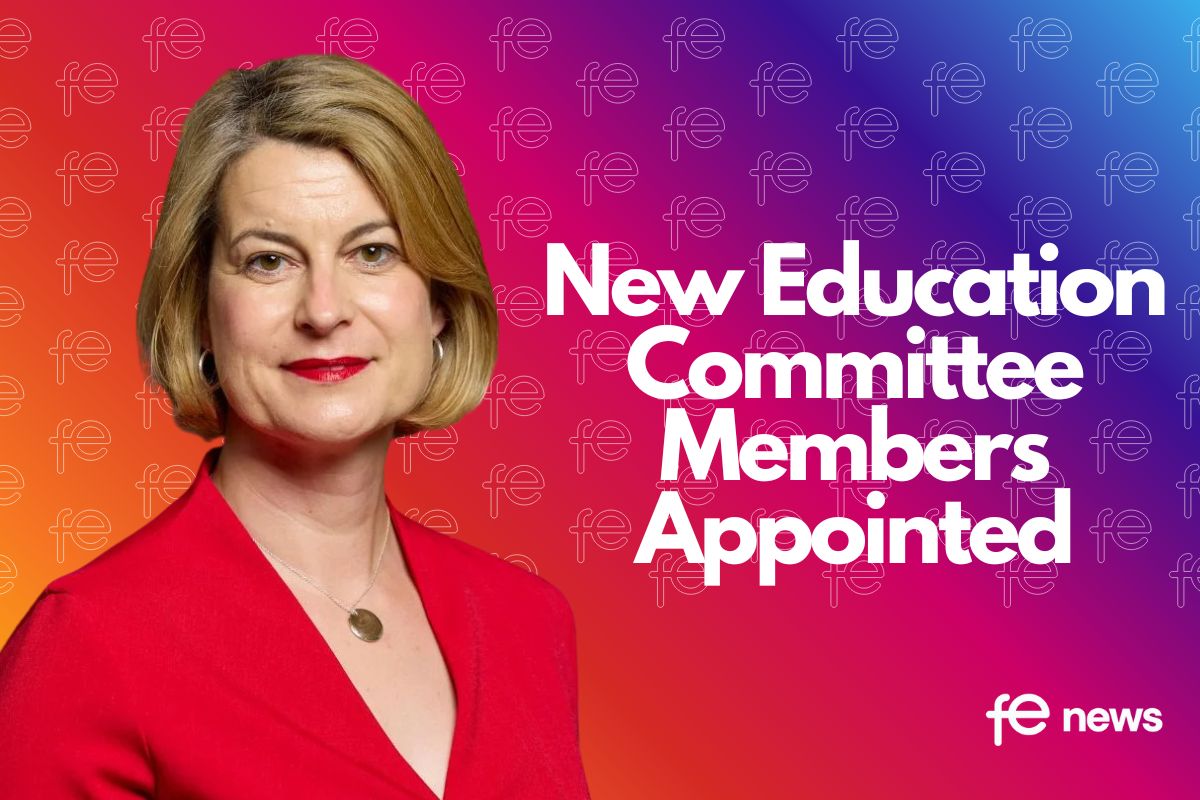

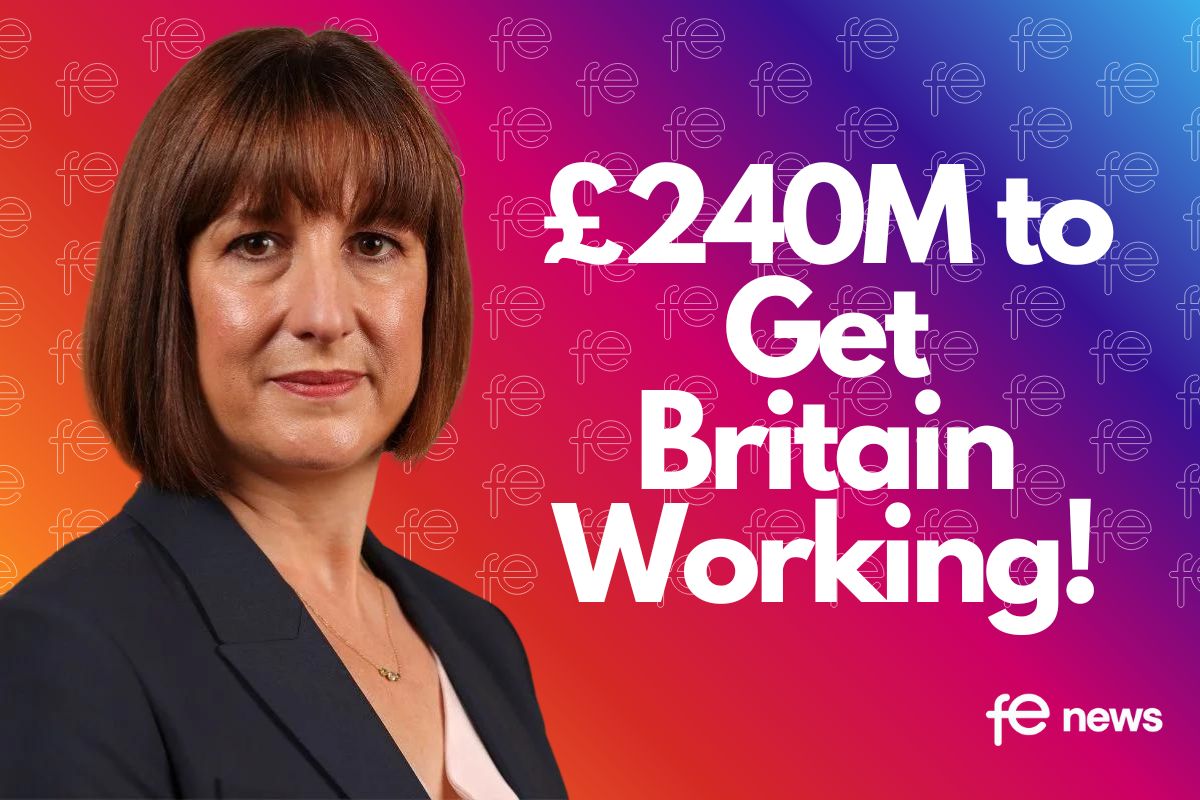


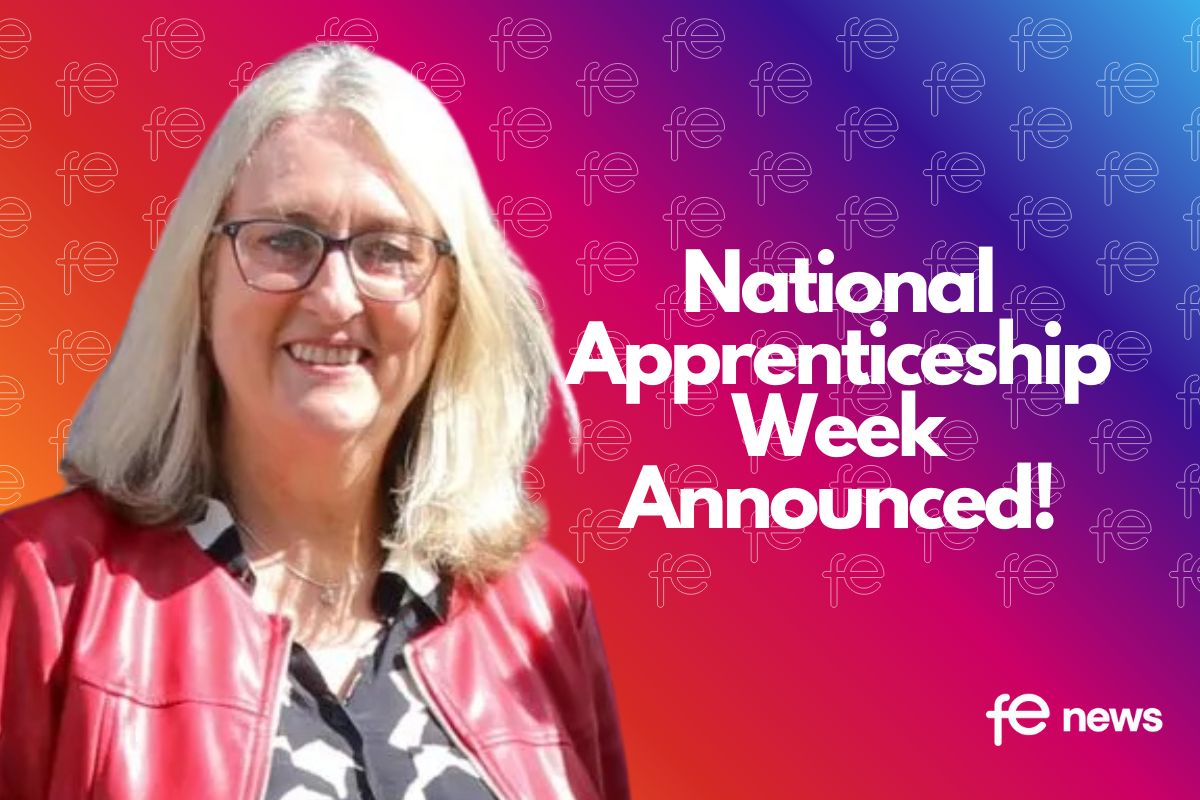
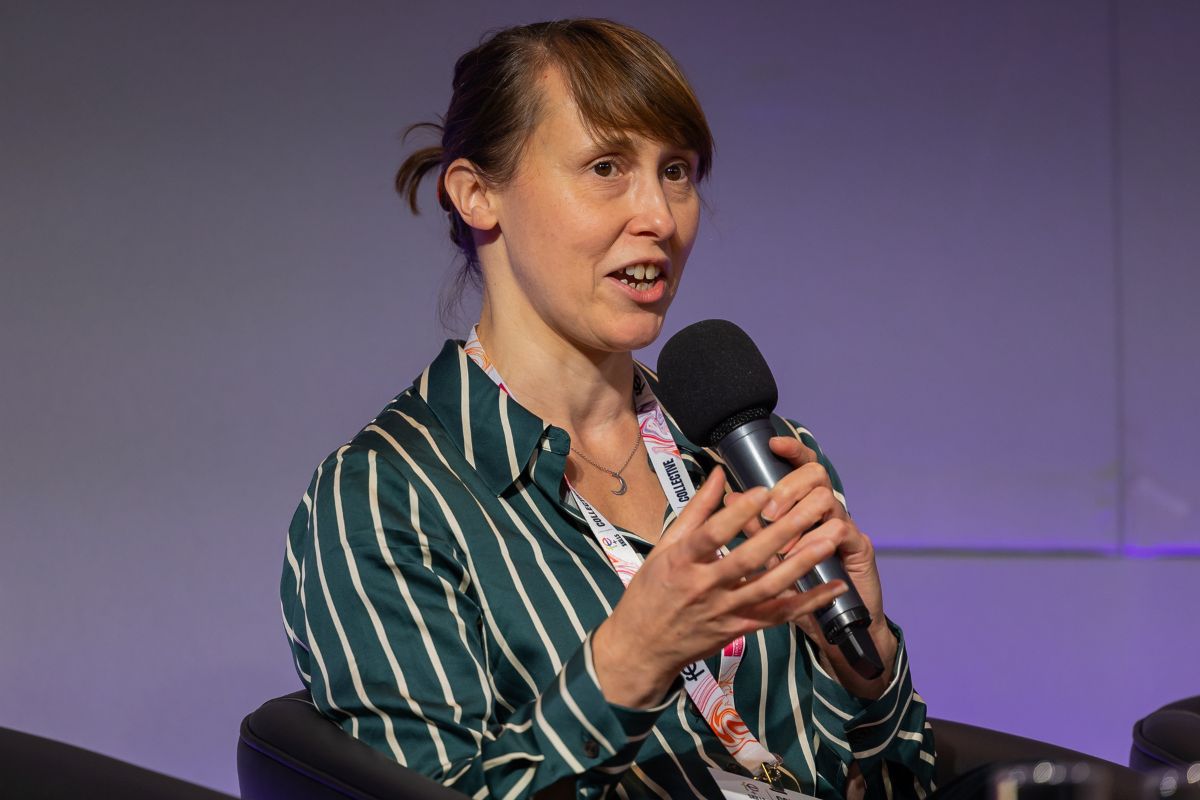
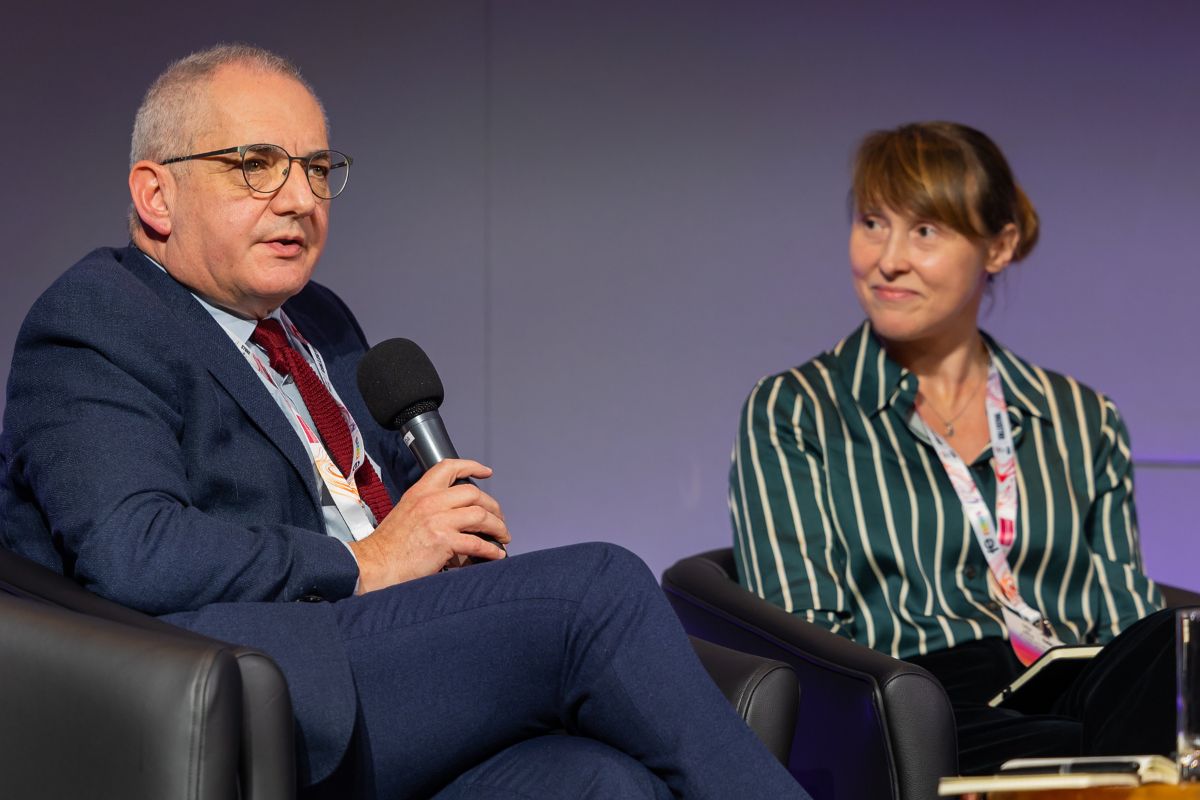
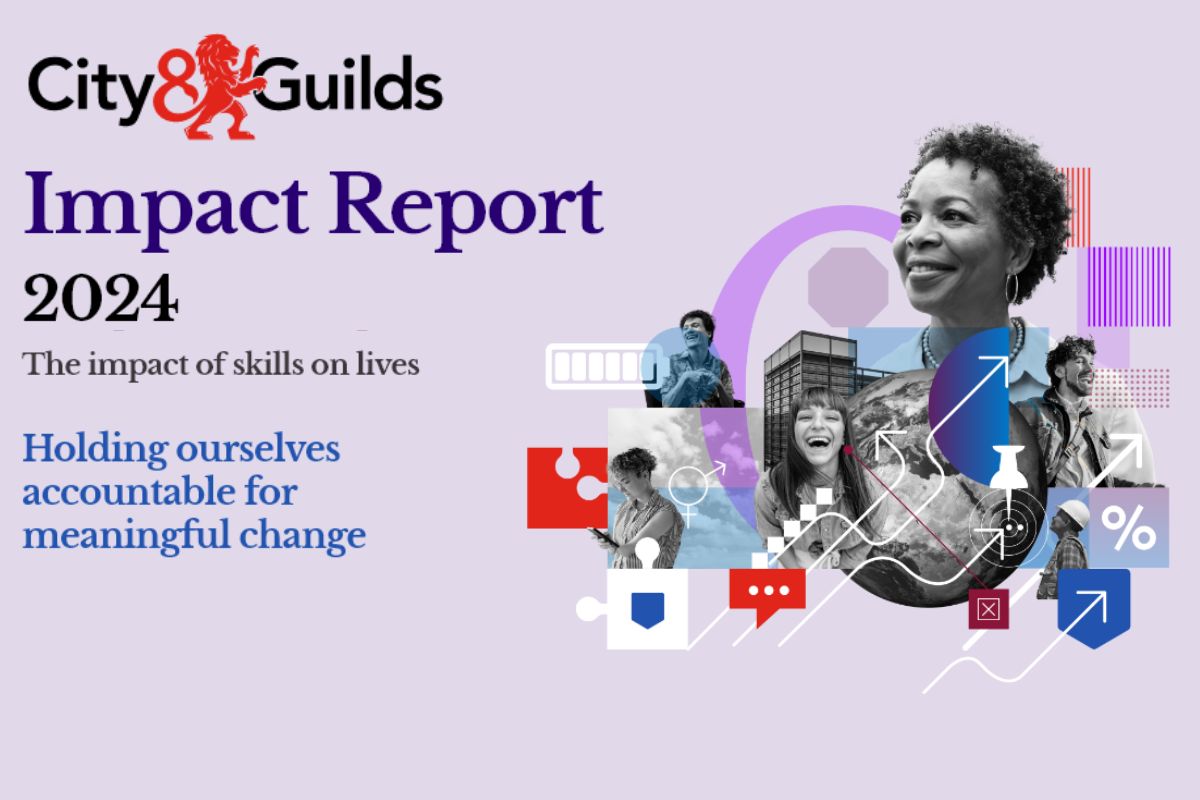
Responses